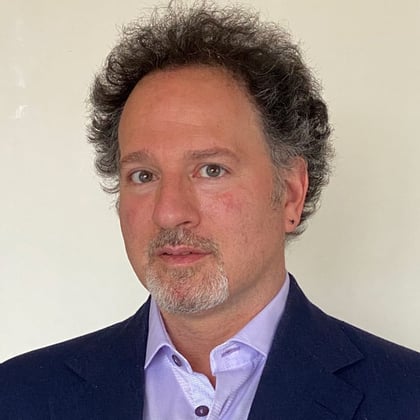What’s the secret to the staying power of one of America’s oldest continuously operating private partnership banks?
An intense awareness of risk has been Brown Brothers Harriman’s guiding principle, according to Zachary Karabell, financial historian and former Wall Street executive, as he tells ThinkAdvisor in an interview.
“Shooting for the stars is all fine and good but carries the seeds of total disaster moonshot risk implosions” is the way he describes BBH’s conservative mindset.
His new book is “Inside Money: Brown Brothers Harriman and the American Way of Power” (Penguin, May 18).
Formerly head of global strategies at Envestnet and president of Fred Alger and Co., Karabell chose to write about the legendary BBH to tell the larger story of “how money made America and how America made the world and where we are now,” he says in the interview.
In the 1980s, when other investment banks, such as Goldman Sachs and JPMorgan, were going public, conservative BBH stuck to its last and stayed private, largely to retain its client-first model.
The firm was started in 1818 by the wealthy Alexander Brown and his sons. In 1931, Brown Brothers & Co. merged with Harriman Brothers & Co.
Ever evolving, BBH launched a limited purpose broker-dealer subsidiary, Brown Brothers Harriman Investments, in 2016 to offer “interests in registered and private funds,” according to the firm’s Private Wealth Management 2020 Client Disclosure Document.
BBH, based in New York, produces revenue of nearly $2 billion and generates $500 million in profit, Karabell writes. The firm has 31 general partners, according to the disclosure.
This is the 13th book written by Karabell, who earned a doctorate at Harvard and was named one of the World Economic Forum’s “Global Leaders for Tomorrow.” He is the founder of the nonprofit news platform Progress Network at New America.
BBH has three businesses: investment management, investment services — including custody work — and private banking. The latter’s clients are individuals, business owners, foundations and endowments, usually with a minimum of $10 million in investable assets, the firm’s disclosure states.
BBH, however, is mainly a business-to-business bank operating in “the unsexy corners of the financial world,” Karabell writes.
Many years ago, though, it boldly ventured where no bank had gone before. In 1828, it underwrote the construction of the Baltimore and Ohio Railroad, which kicked off the railroad age.
Three of its partners — Prescott Bush (George W. Bush’s grandfather), Robert Lovett and Averell Harriman — saw their push for public service and their political stars rise to prominence. Plus, the firm was essential to creating the framework of the United Nations, the Pentagon and the CIA.
When it launched its wealth management business in 1931, Brown Brothers set out to attract high-net-worth clients, especially celebrities. Some news it generated was regrettable, as evidenced by a headline in The Nation: “This is the Republic of Brown Brothers,” referring to the occupation of Nicaragua and the firm’s association with “economic imperialism” there in 1912 and for some years after.
Further, in the 1800s, as a major cotton merchant, Brown Brothers benefited from slave labor, even though it was morally opposed to slavery, Karabell says.
ThinkAdvisor recently held a phone interview with Karabell. An earlier book he penned, “The Last Campaign,” won the Chicago Tribune’s Heartland Prize.
The author says that though “opaque and arcane,” BBH, while operating “in the less glamorous corners of the financial world, is essential to the smooth flow of money through the complicated webs of the financial system.”
Here are highlights of our interview:
THINKADVISOR: Why did you choose to write a book about Brown Brothers Harriman?
ZACHARY KARABELL: I was interested in a bigger story, and their story was a way of writing about the evolution of money in America from almost the founding of the country to the present.
It was a good exoskeleton for a 200-year history of money and how money made America and how America made the world and where we are now.
“The history of Brown Brothers Harriman is the secret history of Wall Street,” you write. Why is it?
Because every day that they don’t appear in the papers is a good day — they don’t want to be in the news. That’s been their culture from the early 19th century to the present.
So it’s secret insofar as the partners have shunned the public spotlight, even though behind the scenes they’re intensively and powerfully influential.
How would you characterize the firm compared to, say, Goldman Sachs, JPMorgan or Morgan Stanley?
One of the big differences is that from the 1970s on, those firms didn’t stay private partnerships. But Brown Brothers has stayed private and remains a private partnership today. They have [about] three dozen partners and 5,000 employees.
How does it benefit them to stay private?
They’re always limited in the amount of risk they can take because it’s their money. They can do deals and bring in other people’s money, but they don’t have shareholder money.
They can’t bet the farm — if the “farm” is shareholders. That changes the equation of risk. They’re a firm that’s intensively and intuitively aware of risk.
In the ever-changing financial services industry, how has BBH been able to survive for more than 200 years?
Two elements carried the firm through. One is the profound, ongoing awareness of risk and the knowledge that shooting for the stars is all fine and good but carries the seeds of total destruction and moonshot risk implosions.









 July 30, 2021 at 05:17 PM
July 30, 2021 at 05:17 PM











